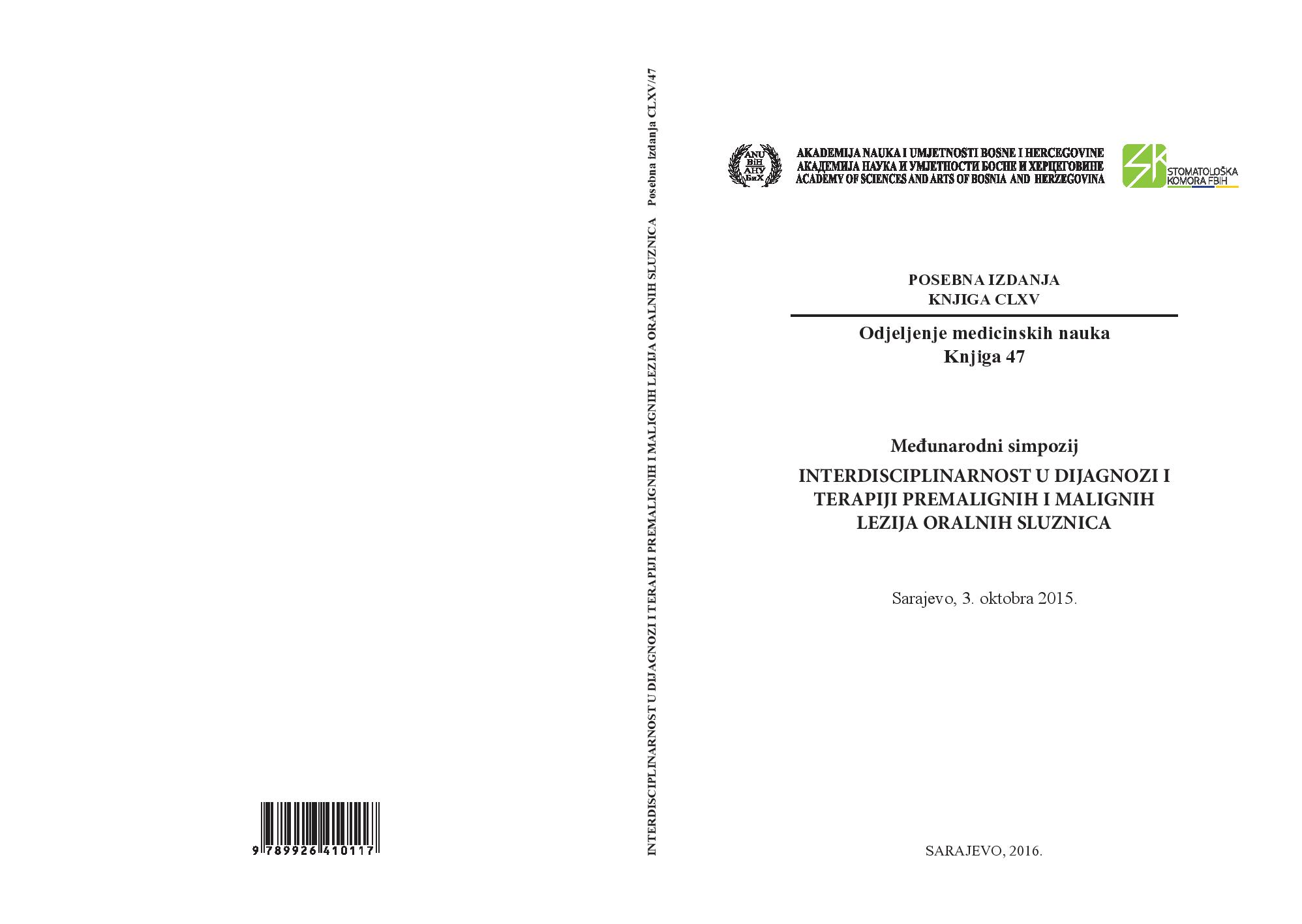PROTOKOL U DIJAGNOZI ORALNOG LIHEN PLANUSA (OLP) I ORALNE LIHENOIDNE REAKCIJE (OLR)
ALGORITHM FOR ORAL LICHEN PLANUS AND ORAL LICHENOID REACTION: DIAGNOSIS AND THERAPY
Author(s): Ana Cekić-ArambašinSubject(s): Health and medicine and law
Published by: Akademija Nauka i Umjetnosti Bosne i Hercegovine
Keywords: Oral lichen planus; Oral lichenoid reactions; Guidelines;
Summary/Abstract: To provide guidelines for differentiation between oral lichen planus (OLP) and oral lichenoid reaction (OLR) based on medical history, clinical presentation(s) and histology. OLP and OLR are both precancerous that should be treatedaccordingly. Background: Etiology of OLP is unclear. Predisposing factors can be classified as systemic and local. Systemic factors are: genetics, stress, metabolic disorders (diabetes mellitus), hypertension, liver disease and drugs. Local factorsare oral microorganisms, galvanism, mechanical and chemical injury to oralmucosa. Systemic factors may create suitable environment for local factors that further lead to immunological disorder in the oral mucosa. Etiology of OLR is related to drugs, dental restorative materials and dentobacterial plaque. Methods:Limited number of references related to epidemiology, etiology, histology and histochemistry, clinical presentation, diff erential diagnosis and treatment will be presented along with proper clinical experience. Discussion: Critical analysis of literature and proper experience was used to provide guidelines for the treatment of OLP and OLR to primary dental practitioners, other dental specialties and general medical practitioners. Conclusion: Differential workup of OLP and OLR should take into account following aspects: local and systemic predisposing factors,clinical distribution of lesions (unilateral vs. bilateral, solitary vs. diff use),histology (epithelial atrophy and “saw-like” pattern are features of OLP whileepithelial hyperkeratosis, inflammatory infiltrate in connective tissue, increased number of degranulated mastocytes and their ratio, increased number of blood vessels and increased levels of TNF-alpha are features of OLR). Literature suggests that OLR has higher risk for malignant transformation compared to OLP .Diagnostic and therapeutic protocol is presented in fi gures 1 and 2.
Journal: Posebna izdanja Akademije nauka i umjetnosti BiH
- Issue Year: 2016
- Issue No: 3
- Page Range: 38-50
- Page Count: 12
- Language: Bosnian

